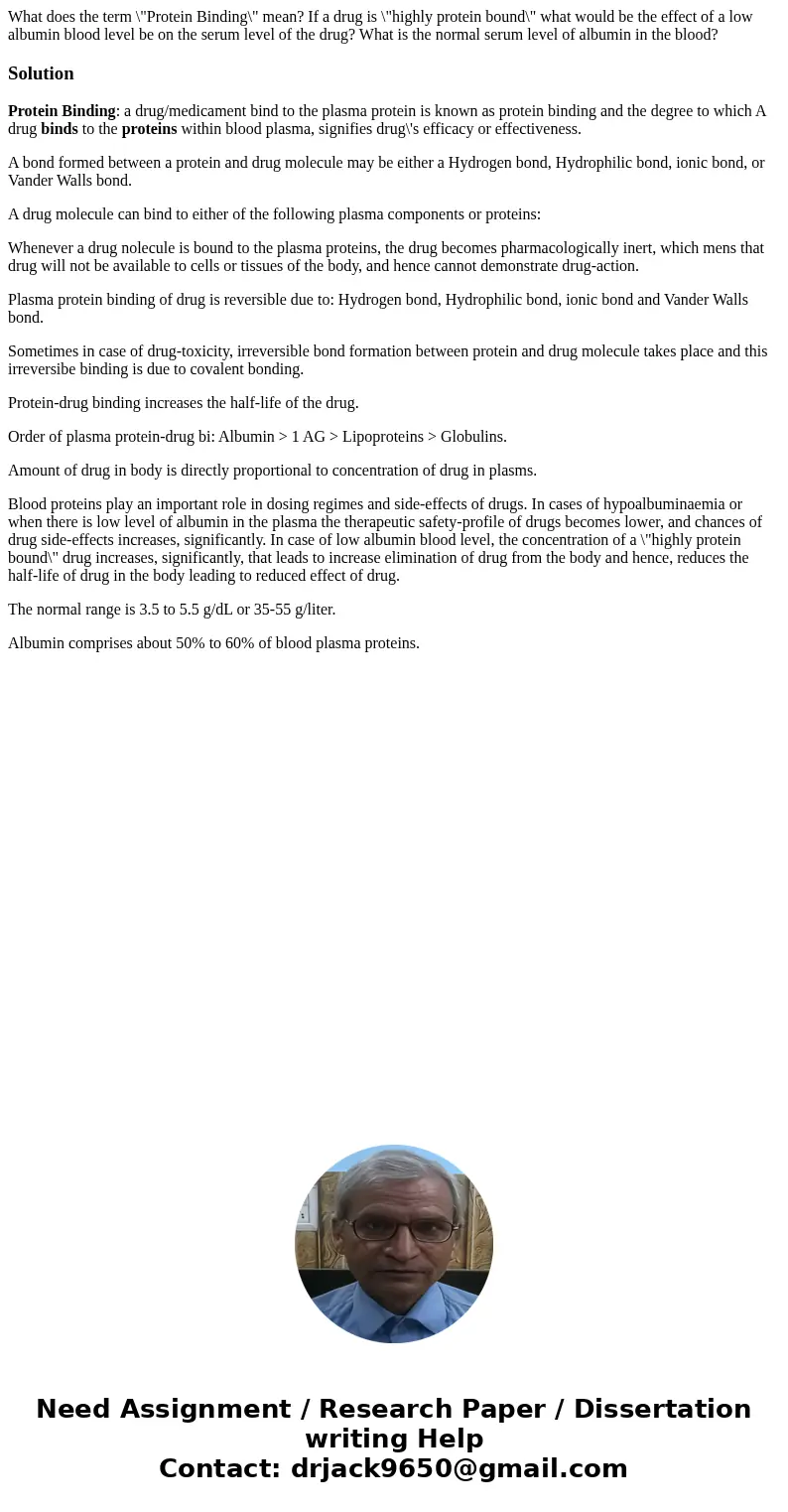What does the term Protein Binding mean If a drug is highly
What does the term \"Protein Binding\" mean? If a drug is \"highly protein bound\" what would be the effect of a low albumin blood level be on the serum level of the drug? What is the normal serum level of albumin in the blood?
Solution
Protein Binding: a drug/medicament bind to the plasma protein is known as protein binding and the degree to which A drug binds to the proteins within blood plasma, signifies drug\'s efficacy or effectiveness.
A bond formed between a protein and drug molecule may be either a Hydrogen bond, Hydrophilic bond, ionic bond, or Vander Walls bond.
A drug molecule can bind to either of the following plasma components or proteins:
Whenever a drug nolecule is bound to the plasma proteins, the drug becomes pharmacologically inert, which mens that drug will not be available to cells or tissues of the body, and hence cannot demonstrate drug-action.
Plasma protein binding of drug is reversible due to: Hydrogen bond, Hydrophilic bond, ionic bond and Vander Walls bond.
Sometimes in case of drug-toxicity, irreversible bond formation between protein and drug molecule takes place and this irreversibe binding is due to covalent bonding.
Protein-drug binding increases the half-life of the drug.
Order of plasma protein-drug bi: Albumin > 1 AG > Lipoproteins > Globulins.
Amount of drug in body is directly proportional to concentration of drug in plasms.
Blood proteins play an important role in dosing regimes and side-effects of drugs. In cases of hypoalbuminaemia or when there is low level of albumin in the plasma the therapeutic safety-profile of drugs becomes lower, and chances of drug side-effects increases, significantly. In case of low albumin blood level, the concentration of a \"highly protein bound\" drug increases, significantly, that leads to increase elimination of drug from the body and hence, reduces the half-life of drug in the body leading to reduced effect of drug.
The normal range is 3.5 to 5.5 g/dL or 35-55 g/liter.
Albumin comprises about 50% to 60% of blood plasma proteins.

 Homework Sourse
Homework Sourse